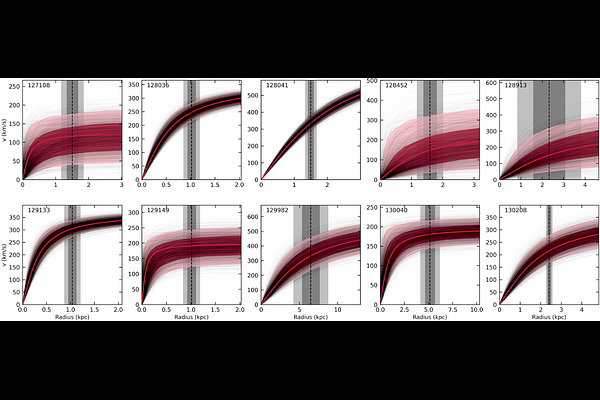Fast Rotators at Cosmic Noon: Stellar Kinematics for 15 Quiescent Galaxies from JWST-SUSPENSE

Fast Rotators at Cosmic Noon: Stellar Kinematics for 15 Quiescent Galaxies from JWST-SUSPENSE
Martje Slob, Mariska Kriek, Anna de Graaff, Chloe M. Cheng, Aliza G. Beverage, Rachel Bezanson, Natascha M. Forster Schreiber, Brian Lorenz, Pavel E. Mancera Piña, Danilo Marchesini, Adam Muzzin, Andrew B. Newman, Sedona H. Price, Katherine A. Suess, Jesse van de Sande, Pieter van Dokkum, Daniel R. Weisz
AbstractWe present spatially-resolved stellar kinematics of 15 massive ($M_*=10^{10.5-11.5}M_{\odot}$) quiescent galaxies at $z\sim1.2-2.3$ from the JWST-SUSPENSE program. This is the largest sample of spatially-resolved kinematic measurements of quiescent galaxies at cosmic noon to date. Our measurements are derived from ultra-deep NIRSpec/MSA stellar absorption line spectra, using a forward modelling approach that accounts for optics, source morphology, positioning, and data reduction effects. 10 out of 15 galaxies are orientated such that we can measure rotational support. Remarkably, all 10 galaxies show significant rotation ($V_{r_e}=117-345$km/s, $\sigma_0 = 180-387$km/s), and are classified as "fast rotators" from their spin parameter. The remaining galaxies are too misaligned with respect to the slit to constrain their rotational velocities. The widespread rotational support in our sample indicates that the process responsible for quenching star formation in early massive galaxies did not destroy rotating disc structures. When combined with other quiescent galaxy samples at $z\sim0.5-2.5$, we find a trend between rotational support and age, with younger quiescent galaxies being more rotationally supported. This age trend has also been found at $z\sim0$, and likely explains why our high-redshift galaxies show more rotational support compared to massive ETGs at $z\sim0$, which are, on average, older. Our kinematic modelling also enables us to calculate dynamical masses. These dynamical masses greatly exceed the stellar masses for our sample (median $M_{\text{dyn}}/M_*=2.7$); they even allow for the bottom-heavy IMF found in the cores of low-$z$ massive ellipticals. Altogether, our results support a scenario in which distant quiescent galaxies evolve into nearby massive ETGs, gradually building up their outskirts and simultaneously losing rotation, due to a series of (mostly minor) mergers.